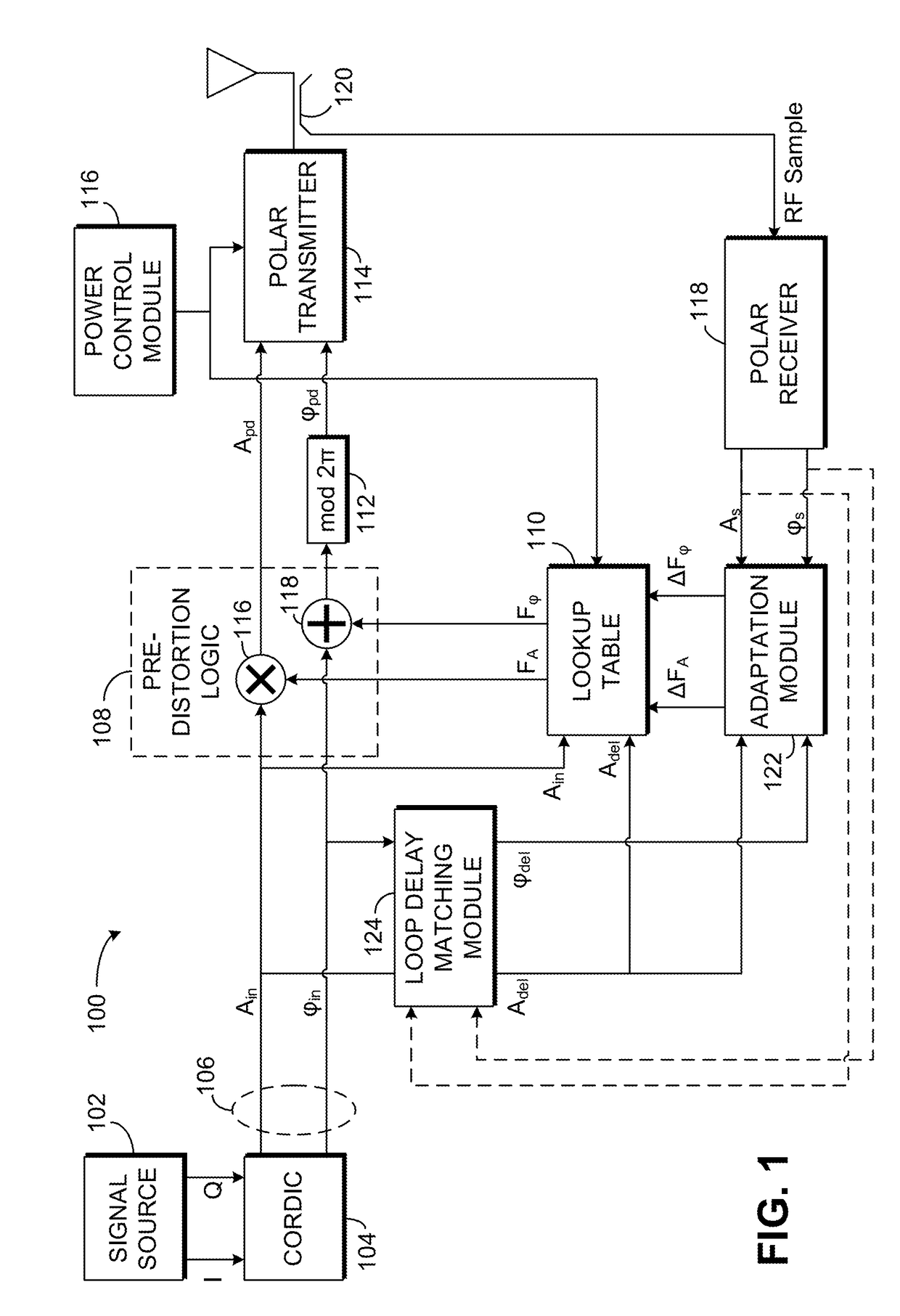Adaptive digital predistortion for polar transmitter
a technology of polar transmitter and adaptive digital, applied in the direction of digital transmission, amplifier modification to reduce non-linear distortion, high-frequency amplifier, etc., can solve the problems of system, however, not fully benefiting from the efficiencies available, and the power consumption of the transceiver is very importan
- Summary
- Abstract
- Description
- Claims
- Application Information
AI Technical Summary
Benefits of technology
Problems solved by technology
Method used
Image
Examples
Embodiment Construction
Digital Predistortion Circuits.
[0036]An exemplary digital predistortion circuit 100 for use with a polar transmitter is illustrated in FIG. 1. A signal source 102 is provided to generate in-phase (I) and quadrature (Q) values of a signal to be transmitted. Signal source 102 may be any source of I and Q values known to those of skill in the art, such as encoders for frequency modulated or phase-modulated radio-frequency signals, such as signals modulated using phase shift keying (PSK) or quadrature amplitude modulation (QAM). As the term is used in the present disclosure, phase-modulated signals include signals that are modulated in phase (e.g., binary phase-shift keying, quadrature phase-shift keying, 8-PSK, or 16-PSK) as well as signals that are modulated in both phase and amplitude (e.g., 16-QAM, 64-QAM, or 256-QAM). Frequency modulated signals include, among others, frequency shift keying (FSK) signals such as binary frequency-shift keying (BFSK) signals, multiple frequency-shift...
PUM
 Login to View More
Login to View More Abstract
Description
Claims
Application Information
 Login to View More
Login to View More - R&D
- Intellectual Property
- Life Sciences
- Materials
- Tech Scout
- Unparalleled Data Quality
- Higher Quality Content
- 60% Fewer Hallucinations
Browse by: Latest US Patents, China's latest patents, Technical Efficacy Thesaurus, Application Domain, Technology Topic, Popular Technical Reports.
© 2025 PatSnap. All rights reserved.Legal|Privacy policy|Modern Slavery Act Transparency Statement|Sitemap|About US| Contact US: help@patsnap.com



